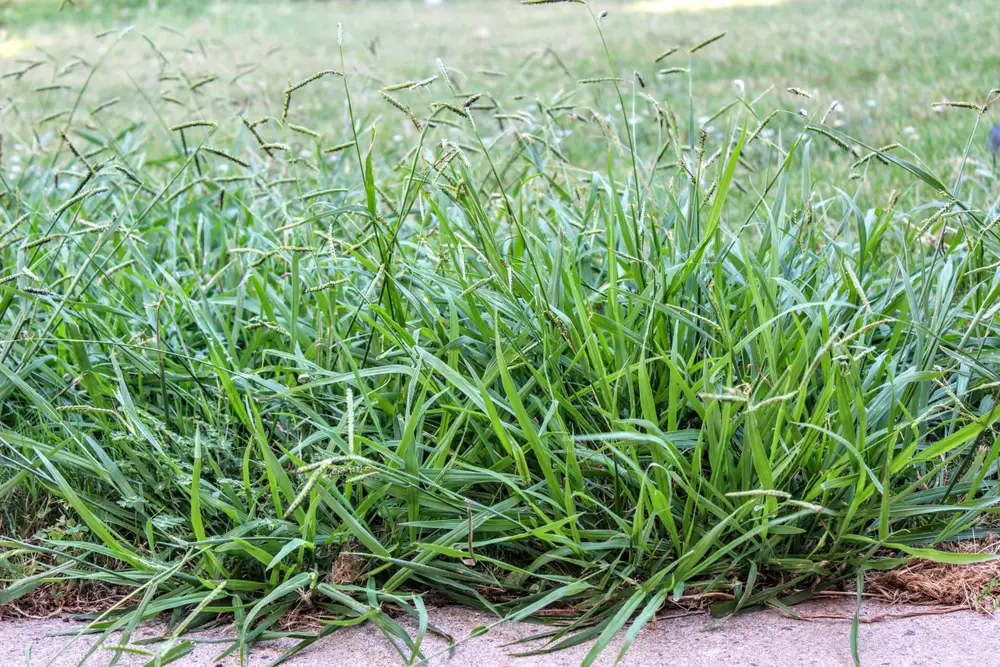Have you experienced annoying and painful things growing on your beautiful lawn? Grass weeds are one of those things that afflict your dream lawn.
11 Weeds That Look Like Grass (Invasive Grass Types)
These 11 weeds look like grass and must be destroyed quickly before they kill your lawn. Crabgrass, Nutsedge, Green & Yellow Foxtail, Common Couch, Yellow Salsify, Smooth Brome, The Johnson, Tall Fescue, Goosegrass, Path Rush.
Below are the 11 weeds that look like grass to help you identify and deal with them quickly and efficiently. You see them as part of your lawn. But before we can get rid of these unwanted grass weeds, we need to know them. Every blade of grass is a study. So, let’s find out.
The List of Invasive Weeds That Look Like grass:
1. The Crabgrass (Digitaria Sanguinalis and Digitaria Ischaemum).
This is the most common lawn invader you may come across. Crabgrass is also known as finger grass and belongs to the genus Digitaria.
The most prevalent species in the Northern US is Digitaria sanguinalis, which is commonly known as large crabgrass.
While the Digitaria ischaemum, which is also known as smooth crabgrass, is more common.
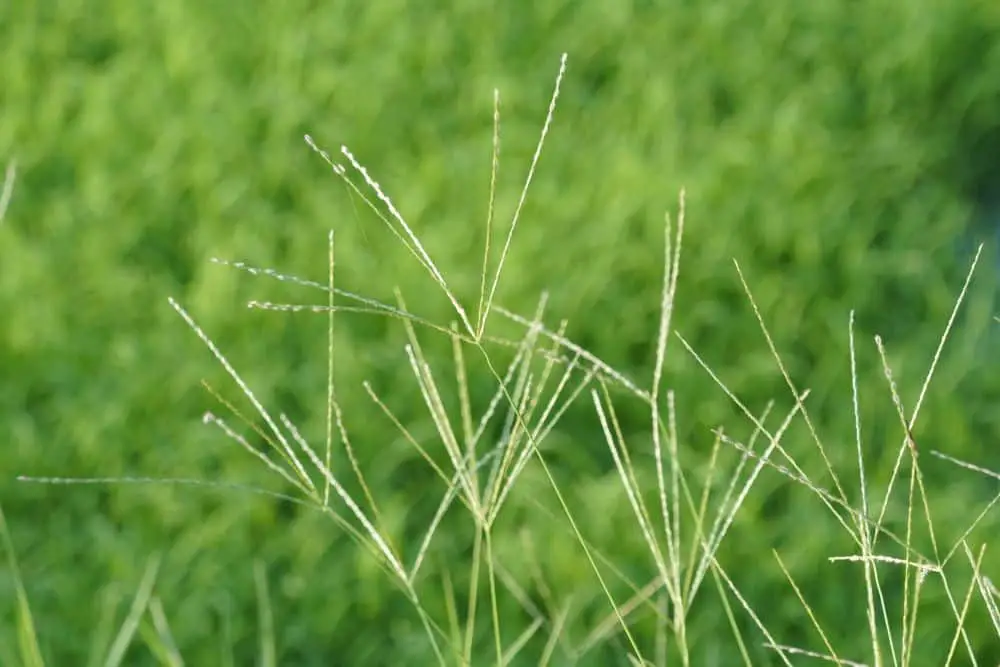
Crabgrass thrives in the sparse lawn that is slightly watered, unfertilized, and poorly drained.
This kind of grass weed is annual, so it dries out each year at the start of winter. But it can produce up to 150,000 seeds a year.
Leaving unsightly areas of dead grass on your lawn when it dies, the Crabgrass is easy to deal with If you reseed your grass and ensure your lawn is watered, fertilized, and in good health.
The crabgrass would not be able to compete and so would not return in the following spring.
Description: Crabgrass looks very similar to regular grass. It grows in clumps and is thicker with a less attractive look. It could reach around 20 inches in height.
How to Get Rid of Grass-like Crabgrass?
The best way or method of getting rid of this grass-like weed is to prevent its germination.
You can use a pre-emergent herbicide, which is mainly combined with fertilizer.
However, be aware of it takes root. It could spread rapidly throughout your lawn. If the crabgrass has already germinated, you should just pull it out using a Crabgrass remover or pull it up by hand individually.
Or else, use a direct contact herbicide.
These methods are the best options against this weed that require some hard work on your part.
2. The Nutsedge (Cyperus Esculentus and Cyperus Rotundus).
The Yellow Nutsedge is called Cyperus Esculentus. The Purple Nutsedge is called Cyperus rotundus.
These two weeds are the most unwanted on every lawn. You don’t want to see them going rapidly either by air via seeds or below ground via rhizomes or tubers.
This is a perennial weed, and once it is in, it is extremely hard to get out or get rid of them. Pulling it up would not help. It could even make the problem worse brought by this weed.
Description of The Nutsedge: Nutsedge looks very similar to regular grass. It has a light green color and it is easy to identify by the nut-like tubers on its roots.
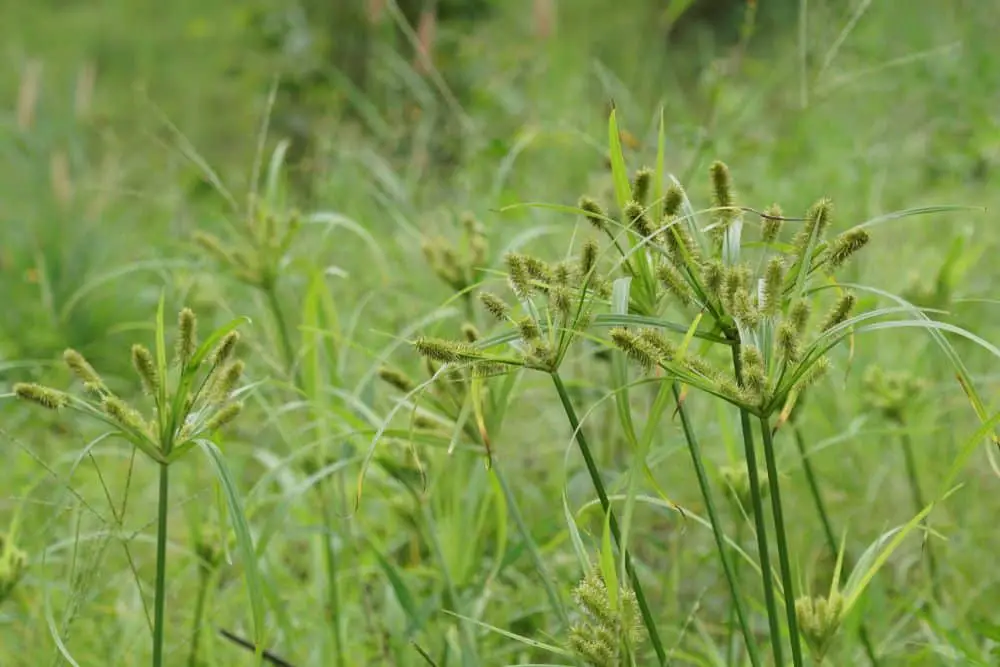
How to Get Rid of Grass-like Nutsedge?
The best way to get rid of Nutsedge is to keep your lawn lush and healthy. It could not move in the first place.
When dealing with the Nutsedge weed, never pull it out, as you would only be spreading it further.
You have only pulled out the stems but leave the roots and tubers, which will only grow stronger the next round. The best method and approach is to grow a thick lawn that may choke out this Nutsedge grass weed. In this way, it finds no space to sprout and spread out.
However, if it is already on your lawn, apply a selective herbicide directly to the base of the plant to kill the root system and whole plant.
3. The Annual Bluegrass (Poa Annua)
This kind of grass weed is a common problem in North American lawns.
Annual Bluegrass likes cool, moist climates, and is commonly grown in shaded areas covered by trees.
It has a lighter and brighter green shade with a long ligule (membrane) holding the base of the leaf to the stem.
Description of Annual Bluegrass: It is a light and bright green color with a long ligule that attaches the leaf to the stem.
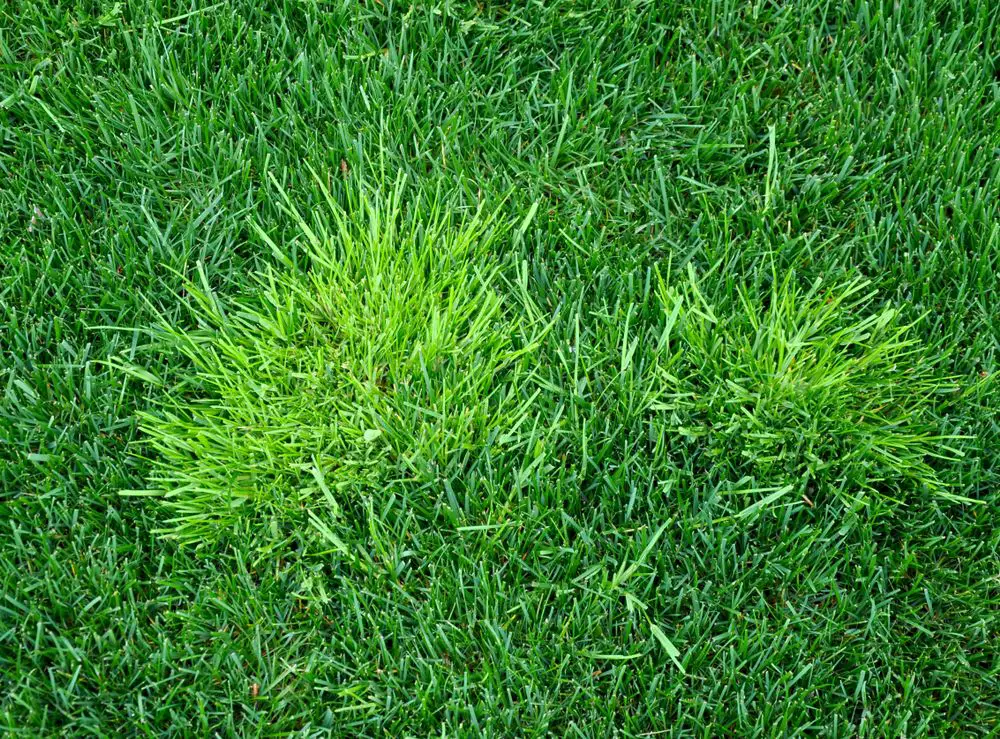
How To Get Rid of Grass-like Annual Bluegrass?
You could easily control this weed by simply crowding it out with a thick lawn of your own. It loves cool and moist conditions.
Get rid of it by simply letting the lawn dry up a little. Then dig it out, plant good grass, and water the area.
Whenever these methods don’t work, you can always resort to herbicides to be applied directly to the weeds.
4. The Green and Yellow Foxtails (Setaria Viridis and Setaria Pumila).
It was named for its resemblance to foxtails. This grass-like weed is another kind of weed that annoys lawn owners.
This fluffy-looking foxtail contains hundreds of seeds that are ready to spread throughout your lawn and the rest of your garden.
They are lawn invaders and can be kept by simply keeping your grass healthy and thriving.
The hairs grow up to 3/8″ long with light yellow and white cobweb-like hair. These are located near the base where the leaf meets the stem.
Description of Green and Yellow Foxtails: The Green foxtail has a smooth upper leaf surface with no hairs. The Yellow Foxtail has distinctive hairs on the upper leaf surface.
How to Get Rid of Grass-like Green and Yellow Foxtails?
That is said, the best method of dealing with this weed is having a thick lawn to crowd it out.
Other than that, you could simply pull it out or even just leave it to die since it is an annual kind of weed rather than a perennial weed. Foxtail would not be able to return the following year.
You may use herbicides that are used directly on the plant to prevent damage to the surrounding grasses.
5. The Common Couch or Quack grass (Elymus Repens).
Common Couch Grass Weed has several other names, such as couch grass and quack grass. It is a perennial weed that likes direct sunlight or shade.
It is a species that spreads via rhizomes and has a tough root system that makes it difficult to remove and pull out.
It propagates through airborne seeds. It is like its home, sparse and unhealthy. The best way to get them off is to ensure a lush and healthy lawn.
Description of Common Couch or Quack Grass: It has coarse patches of blue-green grass with finger-like leaves growing around the stems.
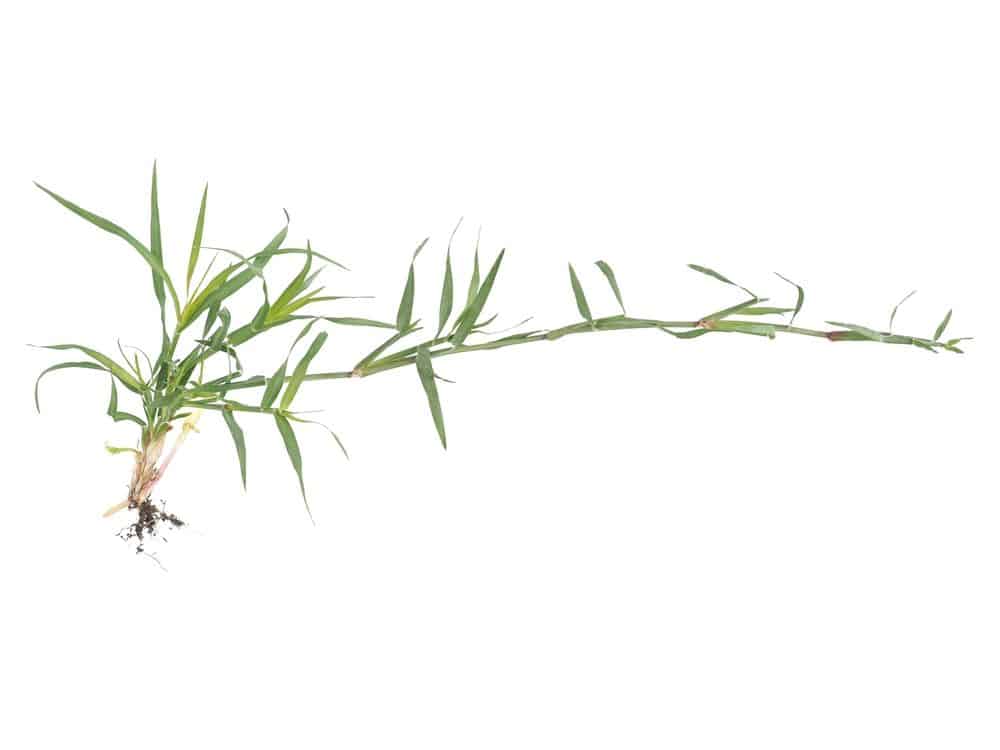
How to Get Rid of Grass-like Common Couch or Quack grass?
Like other weeds, Couch Grass is also controlled through the crowding of thick grass. Naturally, taking care of your lawn makes it robust enough to keep the weeds at bay. But you can dig it up by hand.
Make sure you pull out every last piece. Or else, anything that is left in the soil will regenerate.
It spreads quickly throughout your lawn. Deal it quickly as soon as you’ve noticed its presence, or you may find yourself again dealing with new growth.
If the Quack grass establishes itself before your lawn is thick and robust enough to fend them off, you’ll need an herbicide applied directly to the weeds.
6. The Yellow Salsify (Tragopogon Dubius)
This kind of grass weed is native to Southern and Central Europe and Western Asia.
This weed is now also present in North America where it is considered an invasive species.
It is also known as Western Salsify and enjoys sunny areas. It grows and produces yellow flowers with large puffballs.
Description of Yellow Salsify: Before producing flowers, it looks like coarse gray-green leaves. After a while, when it blooms its yellow flowers or white puffballs, it will become more obvious as a Yellow Salsify grass weed.
How to Get Rid of Grass-like Yellow Salsify?
Mulching and keeping your lawn healthy, this weed would not be able to establish itself. However, if it does, you can simply pull it out.
This weed reproduces only by seed and is annual. Just removing the flowers by shearing or mowing before the seed set will ultimately eliminate it.
Somehow, you can also cook and eat the roots with a flavor reminiscent of oysters as said.
7. The Smooth Bromegrass (Bromus Ramosus Ramosus)
Another kind of weed that is best to avoid. The Smooth Bromegrass could rapidly take over your lawn if you don’t do anything to stop it.
It is because of its dense root system and its ability to spread via rhizomes. Once it is established, you find it hard to get rid of it.
Description of Smooth Bromegrass: If you allow it to grow, this grass weed could reach from three to seven feet in height. It has long drooping leaves from eight to 20 inches in length covered in fine hairs.
How to Get Rid of Grass-like Smooth Bromegrass?
Just make sure your lawn grass is growing healthy and thriving. Definitely, it will defeat the bromegrass on its own. You can use effective herbicides for more extensive growth.
Smooth Bromegrass of its growth behavior, the best option is to crowd it out with a thick lawn. You should do this after mowing down the lawn for the best results.
If it fails, go for herbicides applied directly to the weed.
8. The Johnsongrass (Sorghum Halepense).
Johnsongrass is an invasive grass type that could reach heights up to seven feet.
Though most lawn owners are unlikely not to allow this to happen in the middle of their lawn, it is a perennial grass weed, but you can quickly deal with it.
Description of Johnsongrass: In its early stage, Johnsongrass resembles corn seedlings. Later, you can identify it through the leaves reaching up to an inch in thickness with a white vein running down the center.
How to Get Rid of Grass-like Johnsongrass?
As the most invasive weed and grass, using multiple strategies usually works. One of such is by digging it up or by dousing it in vinegar.
Another way to get rid of them for larger patches is tilling the soil. This way exposes the rhizomes to the cold of the winter that will kill them.
When this grass-like weed grows near the lawn, keep the turf thick and healthy to discourage the invasion of Johnsongrass.
Herbicide alone is not enough to be an effective Johnsongrass killer.
9. The Tall Fescue (Festuca Arundinacea).
Tall Fescue is a long-lived perennial species of grass. It is commonly used for lawns. But, could take over your lawn if not controlled properly.
This grass may make it such a great option for lawns and also a formidable weed as well. This hardy kind of species spreads via rhizomes and is resistant to drought. It makes it difficult to vanquish once present.
Description of Tall Fescue: This grass has thick and wide leaves that feature the pronounced veins of the whole length of the leaf. While the edges of the blades are rough to touch. The bottom of the leaf is lighter in color than the top.
How to Get Rid of Grass-like Tall Fescue?
Your best way or option to kill it, is smothering, covering it with tarp, cardboard, or newspaper, and let it die through lack of sunlight.
Depriving of sunlight, air, and water for its temperature becomes unbearable to the grass weeds. Eventually, it will die.
The herbicides could work though the amounts needed to kill the weeds would be so large that may harm your lawn. Trying to uproot the weeds would not work.
You will just likely leave the rhizomes in the soil where the grasses will grow again.
10. The Goosegrass (Eleusine Indica).
Goosegrass is a small and invasive grass that prefers warmer climates. It is named Goosegrass because the shape of the strands is like the shape of a goose’s foot.
It has the capacity to move into larger areas of your lawn, especially if the soil is compacted and in full direct sunlight.
Description of Goosegrass: Goosegrass is easy to identify by its distinctive strands at the top.
How to Get Rid of Grass-like Goosegrass?
The best preventive measure is to ensure your lawn is well aerated. It could still survive after being mown and could produce more seeds.
Mechanical control could also be effective because it has a centralized root system that makes it easier to manually remove rather than the other weeds.
Just pull it out by hand or use a gardening tool like a slender, sharp trowel to get rid of the plant’s central taproot.
Though this works well in small sections of lawn for larger areas, the herbicide is more efficient.
11. The Path Rush (Juncus Tenuis)
This kind of invasive grass weed could grow up to 24 inches.
It is also known as Slender Rush, Field Rush, Slender Yard Rush, and Poverty Rush. Path Rush spreads underground via rhizomes. It makes it a challenge to get under control once present.
Description of Path Rush: All the leaves grow from the base while sheaths partly cover the stems. It has distinctive cymes and clusters of branches holding seeds on its top.
How to Get Rid of Grass-like Path Rush?
This invasive grass weed is often found growing in permanent pasture or grazing areas. Herbicide is not effective against this invasive grass type. Manually, pull it up with your hands and the whole root system. To stop it from regenerating.
The other option is to keep your lawn mower short. To prevent it from sending out seeds. Though it is a perennial grass weed that may keep growing.
Maintain and keep your lawn with nutrient levels in the soil by fertilizing. The herbicide does well by using a selective herbicide containing the active ingredient of MCPA.
Spot Those Weeds Quickly
Healthy grass is like a plush carpet with fine-textured blades and excellent density.
The health of your grass definitely will be seen in its appearance and how it feels on the bottoms of your bare feet.
Have you ever noticed that most of these grass-like weeds become established when they find lawns that are in poor health? It allows them to move in and spread. Thus, once they are there, they are now tough to be removed.
A beautiful lawn may have some weeds; without hard work and patience, nothing grows but weeds. Some weeds resemble grass yet still are unwelcome since they could damage your lawn.
You can stop them in their tracks by ensuring your lawn is always in good health, lush, and well cared for.
Unhealthy grass is prickly and tough to walk on. Whenever the grass grows together with weeds, that is unlikely and certainly not healthy.
Grass-like weeds may not be easy to spot.
Final Thoughts on 11 Weeds That Look Like Grass (Invasive Grass Types)
If these grassy weeds make your lawn their home, identify them quickly and remove them to prevent them from spreading out.
It is hugely important to be able to identify these weeds to properly maintain a healthy lawn.
Different invasive grass types of weeds require different applications. Knowing them is an essential approach to solving lawn problems.
Happy Gardening!
Read More:
12 Tips to Get Rid of Grub Worms on your Lawn 
How Many Square Feet are on a Pallet of Sod? +Sod Calculator

